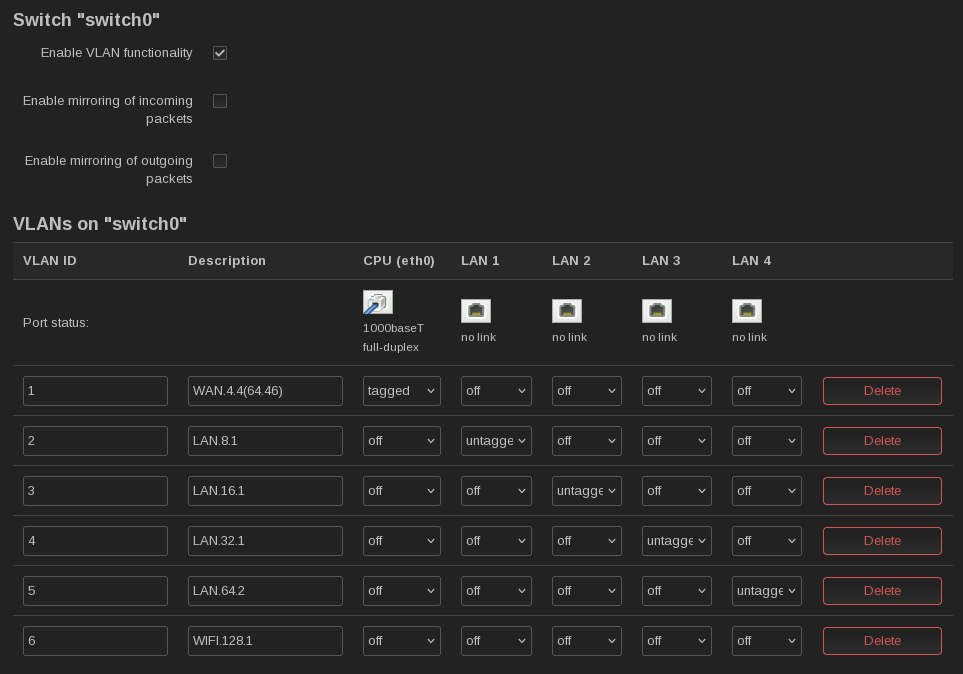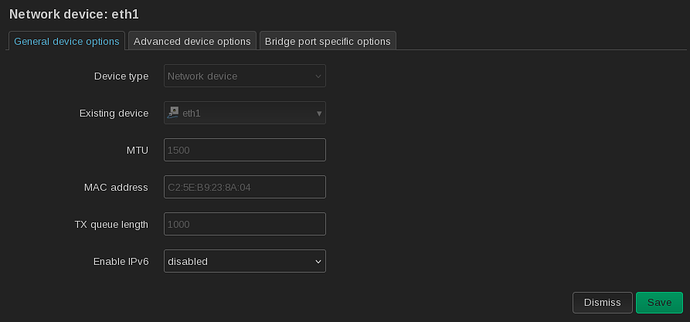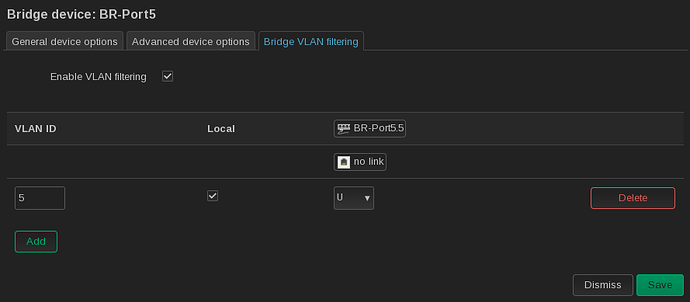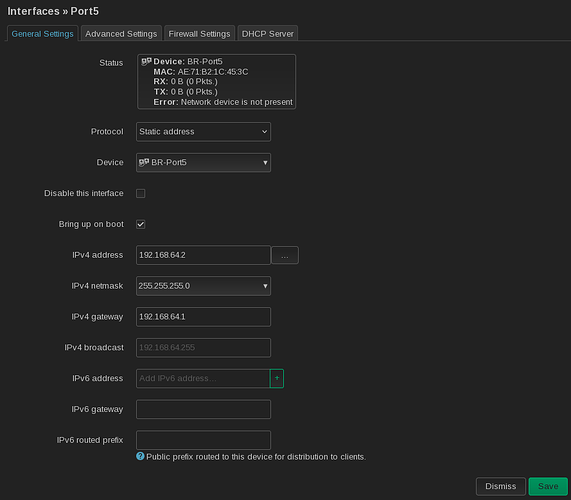I've tried reading through the documentation such as https://openwrt.org/docs/guide-user/network/vlan/managed_switch and https://openwrt.org/docs/guide-user/network/vlan/creating_virtual_switches and https://openwrt.org/docs/guide-user/network/vlan/switch_configuration and my brain melts after a few seconds, they're just too technical and don't actually help with what I'm trying to do.
Can someone please explain to me what to do like I'm someone who isn't a network admin for a dayjob?
Here's what I want (assuming the image uploads):
Each LAN port is a different subnet, different firewall zones, different rules etc. No port talks to any other port except the WAN (a whole bunch of custom firewall rules, that part I'm at least mildy competent in so don't need help there).
I tried getting help here trying to find a device that actually had separate eth ports attached to separate busses and no switch chips in between, but seems they don't exist without going back to an old PC with separate cards (like I had 20 years ago with a Pentium1 running IPCOP, or currently have with RPi and multiple USB-Eth dongles). The former just doesn't fit in my space or power budget, and the latter is the spaghetti I'm trying to get rid of now.
So what I've got now is a Mikrotik Routerboard (hAp RB951ui-2nd). After a day of wrangling, it now has 23.0.5 on it, so that's a start.
With another few hours of wrangling I managed to set the IP address of the WANport to what is now my local subnet, 192.168.64.x, so at least I can both talk to Luci and be on the internets at the same time without messing with cables or ip addresses.
But now I can't get the other ports to change IP addresses or anything. At the very least I want to set port 4 to 192.168.64.2 and then connect to Luci that way, then change port 1 to WAN so I can create some firewall rules between them, but I can't even do that.
So what I've got now is a mess that looks like:
And if all the rest of these upload, maybe they're useful too to see what I've gone through so far:
If eth0 is the GbE to the CPU (which is what the VLAN page says) and the other four 100M ports are connected to the switch chip separately on eth1, why is the virtual eth0.1 and not eth1.1? Or is the VLAN page wrong?
(I probably don't need VLAN6 for Wifi, but it's good to keep it there as a reminder)
Also have no idea what the difference is between tagged or untagged or what I actually need, but at least this shows what I want connected to what.
Attempted to create a new bridge device for Port5, is that what to do?
If I try to remove eth1 from the (working / default / inbuilt) bridge, I lose all connection and have to wait for it to rollback, even though the cable is connected to port1, which (should be) the WAN / eth0
I don't even know what that means
Is this even remotely close to what I should be doing?
Hang on, are these not backwards from the VLAN page? That page said that the GbE WANport was eth0 (so by elimination the switch is eth1). This page seems to agree with the sys/class/net that says the switch is eth0 (by elimination making the GbE WANport eth1)
Maybe? But it says 'no link' even though the cable is plugged into port 5.
64.46 is my current connection, the other 2 do squat no matter what I change.
I can't screw with this one yet, it's my only connection to the device through the GbE / WAN / Port1
You'd think I would be able to plug a cable into here and ping .64.2 yeah? Think again...
Or maybe I could ping 64.3? As they say in my country, "yeah nah".
Hey if the switch is eth1 maybe I can ping that?
Or if it's backwards I can ping eth0? Surely at least one of these last 3 would work? nope nopity nopenope.
I'm all out of ideas. Hope someone else has some...?

















